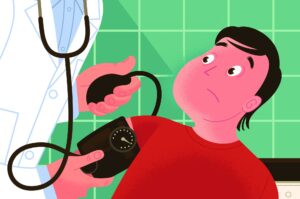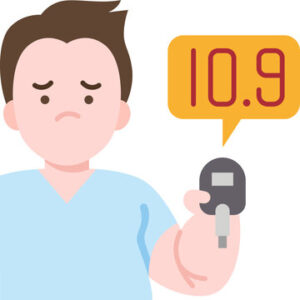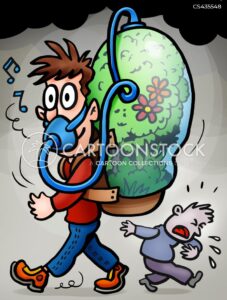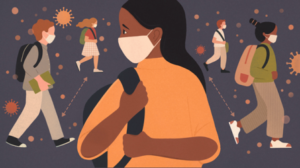The World-Wide Rise Of Obesity And Extreme Obesity
Increasing obesity rates are not just limited to traditionally wealthy nations like the United States or the United Kingdom. Obesity rates have soared in certain sectors of the Middle East and North Africa, particularly in oil-rich nations, even though significant proportions of those populations still live below the poverty line.
Almost 42% of adults age 20 and older are obese in the United States, and 9.2% are severely obese, according to data released by the CDC. Among children and adolescents aged 2–19 years, the obesity rate was 19.7%.
Experts put the explosion in obesity rates in the last decade down to an increase in caloric intake, rapid urbanization, and the popularity of technology that promotes sedentary lifestyles. Lockdowns as a result of COVID-19 haven’t helped either. The impact these factors have is felt particularly hard in populations where exercise is not really practised as part of their culture.
High Blood Pressure: The World’s Most Significant Killer
High blood pressure (hypertension) is the number one risk factor for death worldwide, associated with over 7.6 million deaths annually.
Over the past 30 years, the number of people aged 30-79 years living with hypertension has doubled – rising from an estimated 331 million women and 317 million men in 1990 to 626 million women and 652 million men in 2019, with most of this increase occurring in low- and middle-income countries.
High blood pressure impacts on numerous other body systems and people with high blood pressure are more likely to develop coronary heart disease, stroke, heart failure, peripheral vascular disease, kidney failure, and certain eye conditions.
Tobacco Use And Smoking: The Leading Cause of Preventable Death
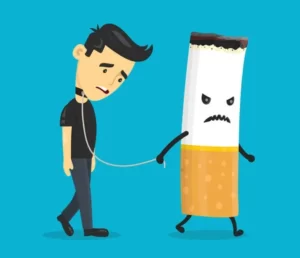
Bottom-line: If you don’t want to die prematurely; don’t smoke, chew tobacco, or vape.
Tobacco kills more than 8 million people each year. More than 7 million of those deaths are the result of direct tobacco use while around 1.2 million are the result of non-smokers being exposed to second-hand smoke.
Smoking harms nearly every organ in the body. It increases your risk of cancer, diabetes, heart disease, lung disease, and stroke. If you smoke you are more likely to catch tuberculosis, develop certain immune disorders such as rheumatoid arthritis, and have erectile dysfunction.
In 2004, Bhutan became the first country to ban the sale of tobacco and to outlaw smoking in all public places. People found guilty of selling or smuggling tobacco into Bhutan can serve a prison term of three to five years with no chance of being granted bail. Other countries with strict tobacco legislation include Costa Rica, Japan, and New Zealand.
In the United States, 1,157 municipalities and 28 states, along with the District of Columbia, Puerto Rico, and the U.S. Virgin Islands have laws in effect that require all non-hospitality workplaces, restaurants, and bars to be 100% smokefree. This means that 62.5% of the U.S. population is protected from secondhand smoke. Speak up for your right to breathe clean, smoke-free air.
Diabetes: The Silent Stealer Of Life
Consistently high blood glucose levels are a sign of diabetes. Worldwide, over 422 million people live with diabetes, and it accounts for around 1.6 million deaths every year. More than 80% of deaths occurred in low- and middle-income countries.
Uncontrolled diabetes slowly damages nerves and blood vessels. Symptoms may go unnoticed for many years, but eventually this damage may become life-threatening. Heart disease, neuropathy (nerve damage), kidney damage, eye damage, foot problems and hearing impairment are all more common in people with diabetes.
The Rise Of The Couch Potato
Humans are born to be active. In ancient times, multi-day hunting and gathering journeys were necessary for survival. Dancing and cultural games were a key part of celebrations and excursions to neighboring villages to visit family and friends would often take several hours.
Inactivity increases your risk of cardiovascular disease, some cancers, and diabetes. Being active helps to control weight and strengthens bones. Exercise also releases natural antioxidants, boosting your immune system and allowing you to live longer. You are also less likely to become depressed, and more likely to sleep better.
The U.S. Department of Health and Human Services report that approximately 80% of all Americans do not meet the National Physical Activity Guidelines for aerobic and muscle-strengthening activity and only 50% meet the guidelines for aerobic activity alone. Approximately 25% are not active at all.
For good health, try and be active every day. Aim for at least 150 minutes of moderate-intensity exercise every week and do muscle-strengthening activities on at least 2 days a week that work all your major muscle groups – such as your abdomen, arms, back, chest, legs and shoulders.
The Explosion Of New Psychoactive Substances
Humans have been using psychoactive substances for many years. Priests drank concoctions made from Amanita muscaria mushrooms during religious ceremonies, and opium was used by healers for medicinal purposes. Nicotine, caffeine, and alcohol still rank as the most extensively consumed psychoactive substances in the world.
What is troubling in the “New World” is the speed at which new psychoactive substances are being made. These drugs are designed to evade drug laws or deliver a more potent “high” and are untested and readily available. Short-term harms include paranoia, psychosis, agitation, and seizures. Over 1100 Novel Psychoactive Substances have been reported to the United Nations Office on Drugs and Crime, Early Warning Advisory in the past 10 years. 34% have been stimulants, 29% synthetic cannabinoid receptor agonists and 14% classic hallucinogens.
Worryingly, many psychoactive substances have been linked with terrorist activities, because not only do they enhance a person’s athletic abilities, they also take away their ability to reason or think rationally. A dangerous combination of effects!
Breathing Can Be Dangerous For Your Health
In 2022, the American Lung Association issued their twenty-third State of the Air report covering the years 2017-2020, and they found distressing trends due to climate change and increases in fine soot pollution linked to wildfires across the West. More than 40% of Americans live with unhealthy air and the report showed that people of color are nearly two-thirds more likely than white people to live in a county with unhealthy air. More than 50,000 premature deaths each year are linked to particle polution. Road transportation emissions are the most significant contributor, followed closely by power generation.
Bad air also sends millions of people to hospital each year, triggering asthma episodes and worsening other respiratory diseases. In addition, pollution contributes to heart disease, causes cancer, detrimentally affects the way children’s lungs develop and speeds up global warming.
Los Angeles-Long Beach is the city with the worst ozone pollution, and Bakersfield has the worst year-round particle pollution. Fresno, California takes the new top spot as the city with the worst short-term particle pollution. Some of the cleanest cities include Bangor, ME; Urban Honolulu, HI; Wilmington, NC; and Roanoke, VA .
COVID-19: Lockdowns, Deaths by the Thousands, and Global Economic Chaos
2020 will be remembered as the year COVID-19 first hit the world. Nearly 3 years later and variants are still prevalent in our society.
Despite having a trial run with other viruses that originated from animals, such as SARS and MERS, the world was woefully unprepared for the level of economic and social destruction that the virus caused.
We were supposed to have been prepared. Another viral outbreak was always on the cards, it was just a matter of time. Billions of dollars had been spent worldwide planning for the inevitable next pandemic. Health authorities stockpiled antivirals and personal protective equipment. Schools and hospitals were issued guidelines on how to prepare. Millions of brochures were printed for the public giving advice on how to prepare your household.
But where did we go wrong?
Firstly, we lacked the prompt action and immediate global collaboration that was necessary to halt this virus in its tracks. The virus had time to take hold in cities with high population densities, where close personal contact and poor hygiene practices were common. The delay in notification of the virus and its pandemic status meant borders remained open for far longer than they should have.
A lack of diagnostic testing plus the fact that many cases were mild or lacked symptoms allowed the virus to spread quickly and take hold of those of us who were most vulnerable.
But hopefully we will learn a lot from COVID-19. Hopefully enough to stop this happening again when the next novel virus comes along.

